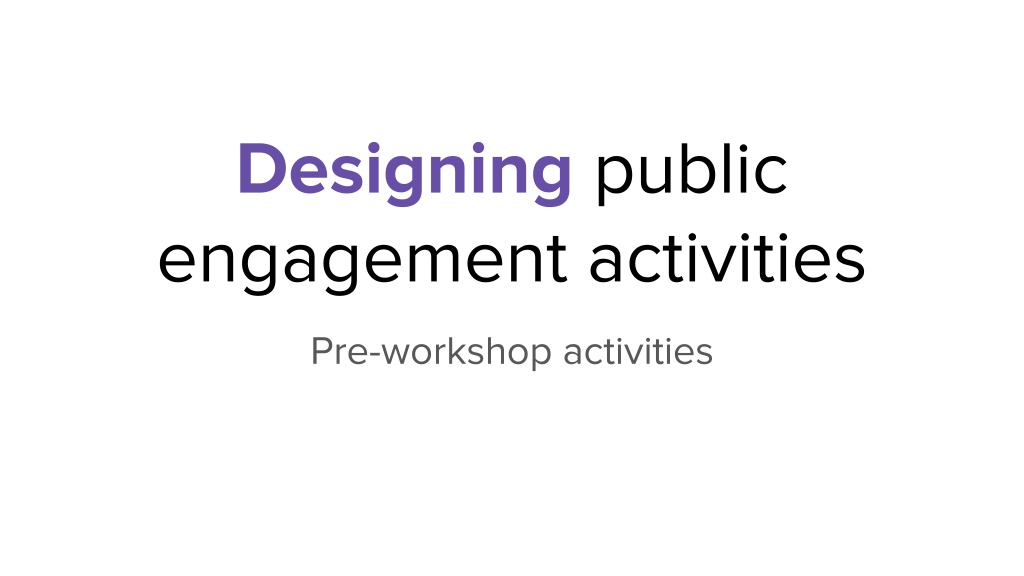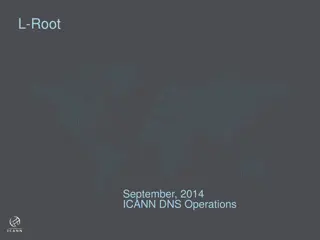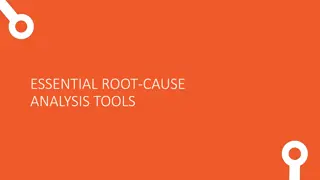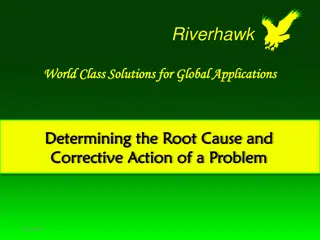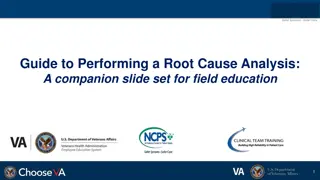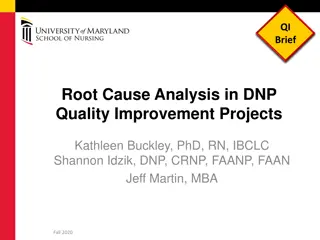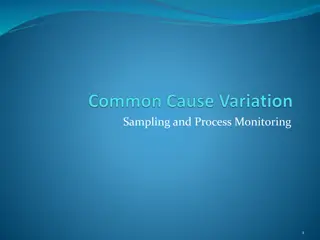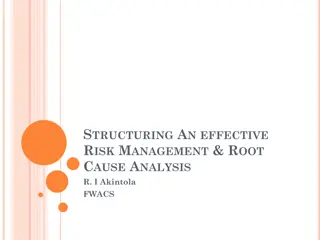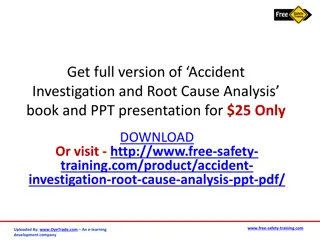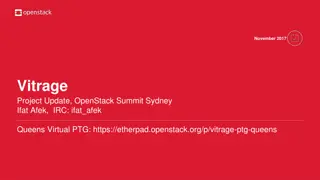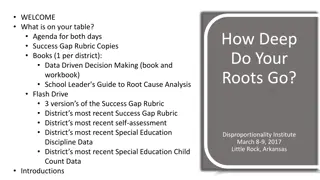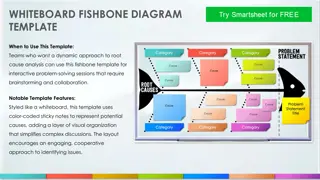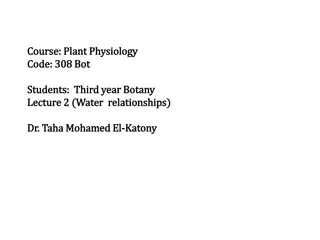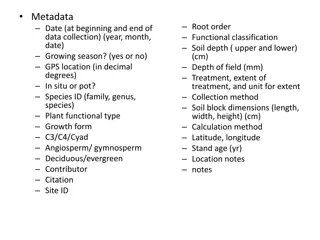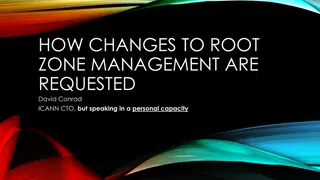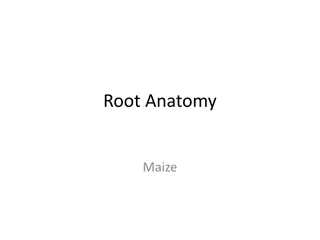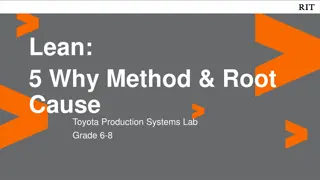Engaging Workshop: Root Cause Analysis for Public Engagement Activities
Explore self-directed activities focused on root cause analysis for designing public engagement activities. Learn how to identify development issues, conduct a 5 Whys analysis, and challenge assumptions to design solutions effectively. Engage in hands-on activities to address societal challenges through targeted problem-solving strategies.
Download Presentation

Please find below an Image/Link to download the presentation.
The content on the website is provided AS IS for your information and personal use only. It may not be sold, licensed, or shared on other websites without obtaining consent from the author. Download presentation by click this link. If you encounter any issues during the download, it is possible that the publisher has removed the file from their server.
E N D
Presentation Transcript
Designing public engagement activities Pre-workshop activities
[Introduction] These are self-directed activities you ll need to complete for the workshop. To edit the slides in the relevant places go to File >> Make a copy. Alternatively File >> Download as PPT
Activity 1 - root cause analysis [INSTRUCTIONS] Choose a development issue/challenge you d like to address through public engagement. Write it at the top of the next slide. Carry out a 5 Whys root cause analysis of what you think is causing the issue! (See slides 5 and 6 for examples) Don t overthink it! It s a simple strategy to begin designing a solution to a problem, but first you need a narrower definition of the problem
Activity 1 - root cause analysis [INSTRUCTIONS] Replace the text with your own root cause analysis (examples on slides 5 and 6) [Problem I d like to address through public engagement] [...why is that happening?] [...and why is that happening?] Don t overthink it! It s a simple strategy to begin designing a solution to a problem, but first you need a narrower definition of the problem [...and why is that happening?] [..and why is that happening?]
Example. Africas food security is at risk (the problem) (partly) because there isn t enough food to feed a rapidly growing population. (partly) because agriculture is lagging behind. ...because there aren t enough farmers, farmers are an aging population. ..because young people aren t taking up farming as a career. (root cause?) Do it again! If you think you can get to an even more specific root cause run the analysis again starting with your last sentence.
Example. The vehicle will not start. (the problem) Why? The battery is dead. (First why) Why? The alternator is not functioning. (Second why) Why? - The alternator belt has broken. (Third why) Why? The alternator belt was well beyond its useful service life and not replaced. (Fourth why) Why? The vehicle was not maintained according to the recommended service schedule. (Fifth why, a root cause)
1 - Discover - root cause analysis You may have to do this several times It can challenge your assumptions about what you thought was causing the problem You can choose to address a problem at different levels We d obviously need more data and research, but it s a starting point.
Activity 2 - stakeholder analysis You need to choose someone to focus your public engagement efforts on. For this workshop we want to choose someone who is influential with respect to your problem statement. Ideally, we also want to work with someone who is highly affected (impacted) by the problem Instructions on the next slide
Activity 2 - stakeholder analysis High Influence/low impact High Influence/High impact [INSTRUCTIONS] List relevant audiences related to your root cause from activity 1 choose which quadrant you think they belong in according to their level of influence and how impacted they are by the issue Influence Low influence/low impact Low Influence/High Impact Example on the next slide Impact
Example stakeholder analysis for: because young people arent taking up farming as a career. Head teachers School teachers in rural areas Minister of agriculture School leaders in rural areas Minister of education Youth group coordinators Note. this analysis is specifically for the statement from the root cause analysis, it works best when it s for a concrete, specific issue. Influence Primary school children School leavers in rural areas Job seekers in rural areas Impact
Activity 3- empathy map [INSTRUCTIONS] Choose the stakeholder from Activity 2 you are most interested in and answer the questions in the empathy map about them. You won t know all the answers. You ll have to make assumptions. However, it s a start in figuring out the best way to engage them. Empathy map on the next page
Double click on the post-it and add your thoughts Double click on the post-it and add your thoughts Double click on the post-it and add your thoughts Double click on the post-it and add your thoughts What are their pains, anxieties, frustrations? What other thoughts and feelings might motivate their behavior? Double click on the post-it and add your thoughts Think & Feel Double click on the post-it and add your thoughts Double click on the post-it and add your thoughts Double click on the post-it and add your thoughts Who are they? Double click on the post-it and add your thoughts Where do they look for opportunities? What do they hear others saying about this issue? Double click on the post-it and add your thoughts Hear See Where do they get their info? What views do others have in their community? What information are they exposed to? Double click on the post-it and add your thoughts Double click on the post-it and add your thoughts Double click on the post-it and add your thoughts Say & Do Double click on the post-it and add your thoughts Double click on the post-it and add your thoughts Where do they hang out? Double click on the post-it and add your thoughts Double click on the post-it and add your thoughts What views do they have? What do they do? Like to do? Pain What challenges do they face? Gain Double click on the post-it and add your thoughts Double click on the post-it and add your thoughts Double click on the post-it and add your thoughts Double click on the post-it and add your thoughts Double click on the post-it and add your thoughts Double click on the post-it and add your thoughts What are their needs? Hopes? Wants? Dreams? What prevents them from achieving their ambitions? http://noahglaser.com
Make sure you bring all three activities to the workshop. They will form the basis for the next steps in designing public engagement activities.
